#anime endings
Text
Anime ED Showdown!!!: SEMIFINALS
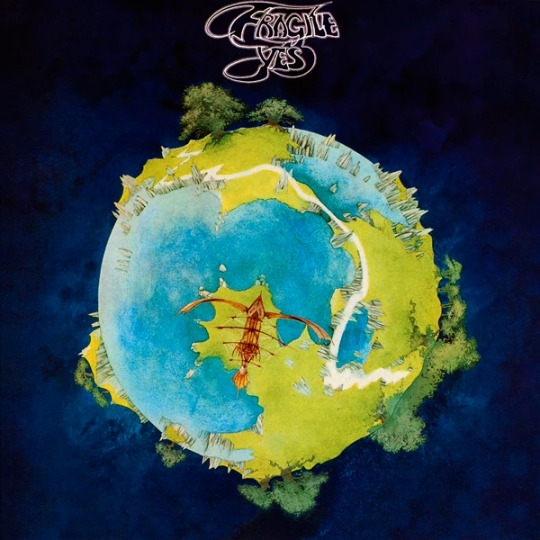
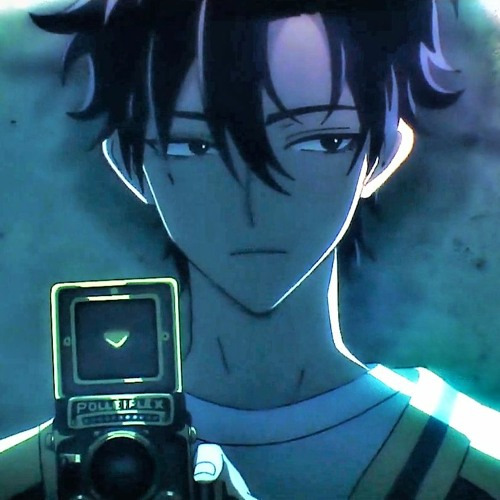
“Roundabout” by Yes
youtube
VS
“OverThink” by Fan Ka
youtube
alternate link for if crunchyroll is not available in your country:
youtube
#link click#jjba#shiguang dailiren#jojo's bizarre adventure#shiguang daili ren#jojos bizarre adventure#sgdlr#matches#semifinals#anime ed tournament#music#anime ending#anime music#poll tournament#poll tournaments#tumblr poll#tumblr polls#anime eds#anime endings#anime ed#anime#polls#poll#Youtube
382 notes
·
View notes
Text
SNK FINAL ED: ITTERASSHAI
HANAKOTOBA ANALYSIS

○●○●○●○●○●○●○●○●○●○●○●○●○●○
-> White Cherry Blossom


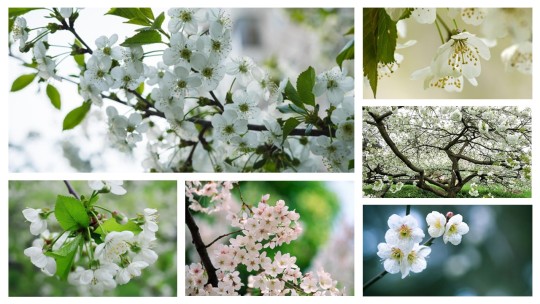
White cherry blossoms are the first flower featured in the final ending theme song credits.
The cherry blossom (Prunus serrulata) is also known as the Japanese cherry and is the unofficial national flower of Japan. Its Japanese name Sakura (桜) has been derived from the word “saku” which means “to bloom”. Its meanings in hanakotoba are “beauty of spirit”, grace, chastity, excellent beauty, gentleness, good education and the “transience of life”. In Japan, cherry blossoms are also a symbol of the “beauty of impermanence”—a Shinto concept better known as “mono no aware” (物の哀れ) as their falling petals are a reminder that although life is short, it is beautiful and should be savoured. The Japanese concept of “natsukashi” (懐かしい) likewise emphasizes the fleeting nature of cherry blossoms. This concept refers to the happy-yet-wistful nostalgia for times and things that we will never be able to go back to. We will never get to experience those moments again, just like the ephemeral cherry blossoms, which makes them even more significant. Cherry blossoms bloom from March to April which is the start of the new fiscal year in Japan. As a result of this cherry blossoms have also come to symbolise new beginnings and springtime. Given that feudal Japanese soldiers associated cherry blossoms with honour, discipline, and dignity—falling flowers were thought to be symbolic of a Samurai's death. In Western floriography, cherry blossoms herald the changing of the seasons and symbolise renewal and rebirth. They also symbolise the fleeting nature of life, tenderness, forgiveness, strength, beauty, love, confidence, peace, friendship and gratitude. White cherry blossoms, in particular, represent purity, innocence, and simplicity, as well as hope and rebirth. White cherry blossom blossoms convey joy in the celebration of new beginnings.
“Utsukushiki Zankoku na Sekai” (AOT ED1) depicts a young Mikasa rushing about looking for Eren in a dark, gloomy landscape before shifting into her older self. “Akuma no Ko” (AOT ED7) depicts a young Eren wandering around on his own in a dark cage until he breaks free into a colourful meadow before morphing into his older self. Meanwhile, the final ending, “Itterasshai”, depicts both a young Mikasa and Eren as well as an adult Mikasa and Eren uniting in a field of flowers beneath a picturesque sunset. Given that white cherry blossoms symbolise new beginnings, hope, and rebirth, their inclusion in this montage enhances its depiction of the pair reuniting in the afterlife—effectively tying the first and seventh ending sequences together. Various concepts embodied by the cherry blossom, particularly the transiency of life, mono no aware (the beauty of impermanence), and natsukashi (nostalgia for times and things we can't return to), are also significant themes in Attack on Titan's final arcs, making the flower's placement here appropriate.
-> Red Rose

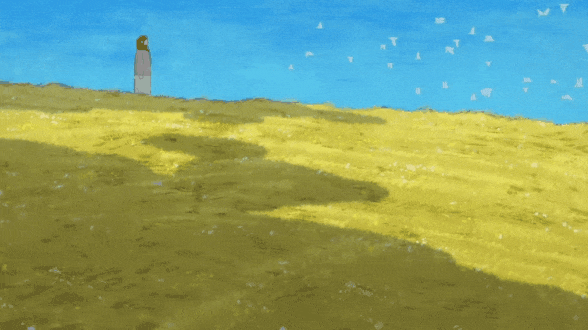

The next set of flower featured in the final ending sequence are red roses. In Japan, red roses are called benibara (紅薔薇). In hanakotoba roses symbolise love and beauty while red roses in particular symbolize affection and passionate love; while rose thorns represent “happiness in misfortune”. In Western floriography, roses symbolize love, passion, beauty, romance and secrecy. Red roses symbolize enduring passion, desire, affection and romance.
In the visuals for “Itterasshai” four red roses are seen growing alongside a white picket fence. A white bird is later seen flying with a single red rose in its beak. Four red roses are said to symbolise that “nothing will ever come between us”. While a single red rose symbolises love at first sight. This suggests that nothing, not even death, is capable of impacting the pair's feelings for each other and that they have been in love since their first meeting as children. While red roses are an international symbol of romance, passion, devotion and long-lasting love, in some cultures they symbolise sacrifice, martyrdom, bravery, and strength. These qualities embody Eren’s character pretty well.
-> Dandelion


In the above panel, Mikasa holds two dandelion flowers in her hands. Dandelions (Taraxacum) are known as Tanpopo (たんぽぽ) in Japanese. Its meanings in hanakotoba are sincere love, separation and a prophecy of love. Additionally, in English floriography, dandelions represent faithfulness, hope, healing, light and happiness. They also symbolise joy, youthful thoughts, endurance, prosperity and healing.
Given that the dandelion is a symbolic representation of faithfulness, happiness, healing, light, hope and prophecies of love—their use in this ending sequence further reinforces the concept of Mikasa reuniting with Eren in the afterlife.
-> White Daisy


Daisies (Bellis) are known as hinagiku (デイジー) in Japanese, and they hold the hanakotoba meanings of patience, purity, “secret love”, hope, innocence, beauty, peace, and faith. In English floriography, yellow daisies symbolise joy, and growth as well as a turning point or new beginning.
Considering the daisy's symbolic connotations, its usage ending sequence once more accentuates the depiction of the pair finally getting a new start following the events of the series' conclusion. Its meanings of patience, hope, faith and secret love in particular highlight Mikasa going through the rest of her life hoping to be reunited after death.
───●◎●─── P.S. ───●◎●───
-> White Carnation



The flowers Mikasa places by Eren’s grave are the same flowers we see her holding after her passing. These flowers are known as carnations (Dianthus caryophyllus) and are called Kānēshon (カーネーション) in Japanese. Its meanings in hanakotoba are innocent and deep love. White carnations in particular hold the meaning “my love is love” and pure love in Japanese culture. In Western floriography, they symbolise love, fascination and distinction. Carnations are the most popular flower used at weddings in China, while in Korea they express admiration, love and gratitude. Carnations are frequently given as gifts in Japan to convey affection for loved ones or to honour those who have passed away. White carnations, in particular, represent purity and are therefore commonly utilised in ceremonies and rituals.
The meaning of these flowers makes them an excellent choice for this scene and ties well into Mikasa and Eren’s dynamic. The flower’s meaning “my love is alive” perfectly encapsulates Mikasa’s feelings in the aftermath of the series and is a fitting offering for Eren’s gravestone.
○●○●○●○●○●○●○●○●○●○●○●○●○●○
╰┈➤ Attack on Titan ED7 Hanakotoba Analysis
╰┈➤ Anime Hanakotoba Posts Directory
[I wanted to contribute something towards the fandom considering that aot/snk has finally ended but I knew that doing a full-scale review of the episode would be a bad idea. In short, I want to say a lot of things but at the same time, there's nothing I want to say... When I saw the flowers featured in the final ed I knew I had to cover them. If you guys want me to do a Q&A for the show, I'd be willing to... So, feel free to send me questions to answer...
As a side note, I didn't go into a lot of detail here and stuck to focusing on eremika since I've already done a hanakotoba post for snk/aot--where I went into greater depth on the show's general themes.]

#snk#aot#attack on titan#shingeki no kyojin#anime#aot final season#eren yeager#eren jaeger#mikasa ackerman#eremika#eren x mikasa#eren yeager x mikasa ackerman#hanakotoba#snk hanakotoba#aot hanakotoba#anime hanakotoba#hanakotoba analysis#floriography#anime endings#anime ending theme#anime themes#anime music#snk final season#snk eren#snk mikasa#snk itterasshai
64 notes
·
View notes
Text
Honestly, us Haruhi Suzumiya fans need to become a stronger force. Haruhi Suzumiya needs to be remembered again within the anime community, so that our history of when she ruled the internet is not forgotten.
Because tell me why I'm a video of best anime endings throughout the years, and 2006 comes up, and Hare Hare Yukai isn't even one of the six options. HOW DO PEOPLE NOT KNOW THE HARE HARE YUKAI ANYMORE.
I'm not saying that you have to watch or like the show, but you have to at least know that it exists, and know the death grip that the Hare Hare Yukai had on people. It's the same way that I know Dragon Ball, Naruto, One Piece, JJK, and Oshi no Ko's openings, despite not watching it. They don't even appeal to me, but I would still include them because i realize how influential they are. Same with the Hare Hare Yukai.
This is becoming unacceptable anymore. I refuse to believe this. You all will know Hare Hare Yukai (the song at least). You have no choice.
youtube
#haruhi suzumiya#the melancholy of haruhi suzumiya#hare hare yukai#anime endings#dragon ball#one piece#jjk#naruto#oshi no ko#you must all know the hare hare yukai#Youtube
10 notes
·
View notes
Text
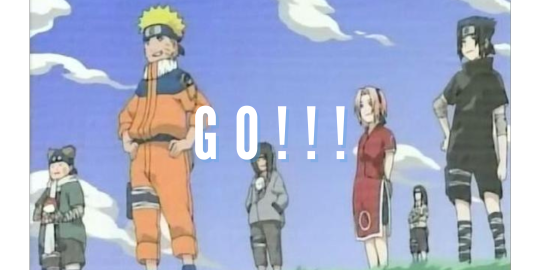






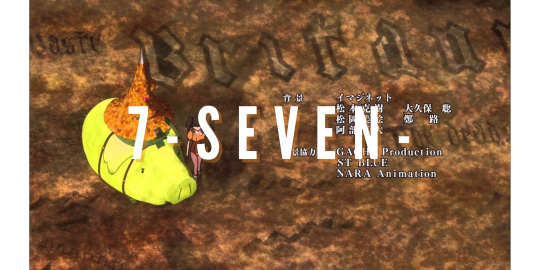
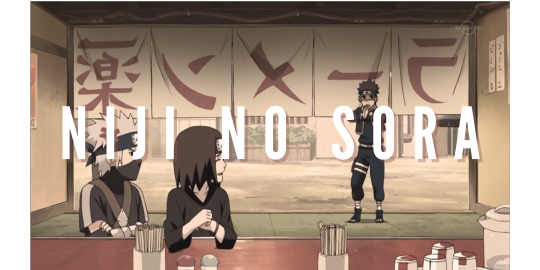


FLOW + Anime ♥️
#anime#FLOW#anime openings#anime endings#naruto#go!!!#eureka 7#days#re:member#code geass#colors#world end#sign#bravelue#seven deadly sins#7-seven-#niji no sora#durarara#steppin out#howling
9 notes
·
View notes
Text
Our song choice this week is for our favorite ED of the current season, 7th Time Loop. It's Kienai (Not Disappearing) by THE BINARY, and it focuses on artwork of the characters enjoying day-to-day activities. Enjoy!
#anime#anime blog#blog#anime and manga#anime series#music#anime music#anime ending#anime endings#7th time loop
3 notes
·
View notes
Text
The maid sama anime ending should be illegal
9 notes
·
View notes
Text
wrapped around your finger & going in circles
12 notes
·
View notes
Text
youtube
Wonderful Things That May or May Not Wonderful!!!
There's a lot of talk about show openings and theme songs. There is less talk about credits and ending themes. This is understandable as many credits sequences are just text scrolling across a black background with music playing in the background and not many more do just a bit more than that. Heck, many tv programs nowadays just shove the credits sequences into a corner while they play an ad for the next program and I don't think anyone cares. Fortunately, anime still knows how to give us a solid credits sequence (or ED as it is known in the business) and while a lot of them want to wind things down, the ED for the Shonen smash hit, Jujutsu Kaisen, wants to do the exact opposite: Get you moving. Get you moving with the main cast dancing and chilling out with a rotoscoped art-style that I feel like I've seen in a fashion ad and a song so funky that you can smell the garlic seeping out of your computer monitor. It is a blast to watch and a welcome change of pace from many anime EDs or even credit sequences in general. I was going to put a joke about mood whiplash in here but instead I'm just going to say that this ED is wonderful, the show and its opening are also wonderful, and now I will continue eating this pickle that you cannot see. Good stuff all around.
youtube
#wonderful#lost in paradise#jujutsu kaisen#ali#anime endings#credits#music#songs#rotoscope#fashion ads#shonen#funky#anime#manga#dancing#gege akutami#studio mappa#tv show#animation#Youtube
4 notes
·
View notes
Text
#attack on titan#tay's.polls#aot#snk#shingeki no kyojin#anime endings#this one's probably less divisive
4 notes
·
View notes
Text
youtube
This is probably one of my favorite anime endings ever. The song is beautiful, Voice? By Hatena but also the visuals are just a very beautiful summery of Dr. Stone’s premise and what it stands for. The lyrics are about a person pushing forward to the future despite everything, despite an unknown path and reaching towards a voice, a hope, for something more.
If you haven’t watched/read Dr. Stone I recommend it! It plays off as a very comical manga/anime with a dash of nerdy scientific situations of inventions but it’s a well done post-apocalyptic (actually it’s not apocalyptic but reversion of the earth to how it once was before man tilled the land and conquered it), but there are beautiful and sad moments in Dr. Stone that elicits cathartic emotions. It has a wide variety of a cast that make up a wholesome and fun range of characters, and I think Dr. Stone has one of the best “villain” vs hero relationship in the earlier arcs between Senku and Tsukasa.
#dr stone#tsukasa shishio#senku ishigami#hatena#anime endings#Mad’s recommendation#i heard the song on my playlist and it just made me want to share this#Youtube
7 notes
·
View notes
Video
XX:me - 「BEAUTIFUL WORLD」
4 notes
·
View notes
Text
Anime ED Showdown!!!: FINALS


“Roundabout” by Yes
youtube
VS
“Wind” by Akeboshi
youtube
#jjba#naruto#jojo's bizarre adventure#matches#finals#anime ed tournament#music#anime ending#anime music#poll tournament#poll tournaments#tumblr poll#tumblr polls#anime eds#anime endings#anime ed#anime#polls#poll#akeboshi#yes#Youtube
277 notes
·
View notes
Text
Bleach Hanakotoba Analysis Part 3 ~ OP16: Scar &
ED31: Saihate

○●○●○●○●○●○●○●○●○●○●○●○●○●○
-> Division 01: Chrysanthemum
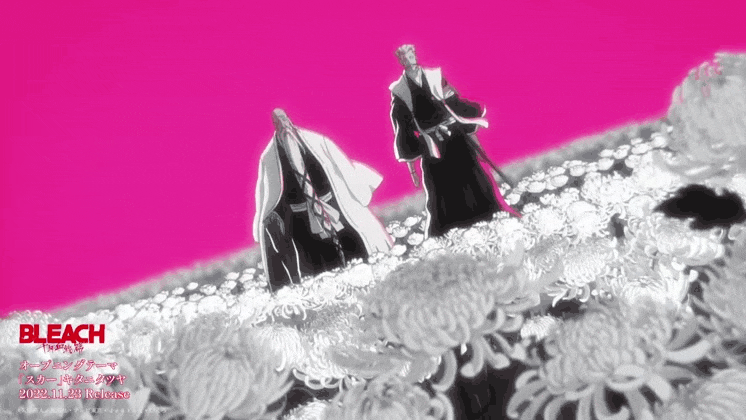

The flower insignia of the 1st division is the chrysanthemum (Chrysanthemum morifolium) which is known as kiku (菊) in Japanese. According to the official Bleach lore, this flower signifies truth and innocence. Its meanings in hanakotoba include nobility, virtuousness, perfection, rejuvenation, longevity and good luck. A sixteen-petalled chrysanthemum is not only one of Japan’s two unofficial national flowers but is also used on Japan’s imperial seal. In Western floriography, Chrysanthemums symbolise cheerfulness, devoted love, loyalty, happiness longevity, joy, trust, optimism, fidelity and friendship. In some cultures, Chrysanthemums—particularly white ones—are only associated with mourning, sympathy and death.
-> Division 02: Pasque flower
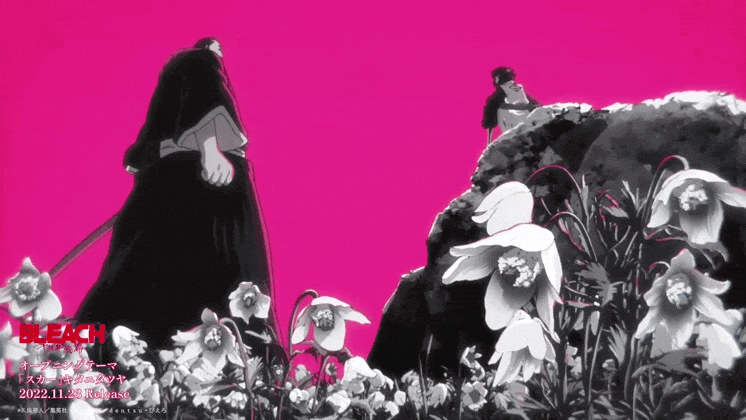
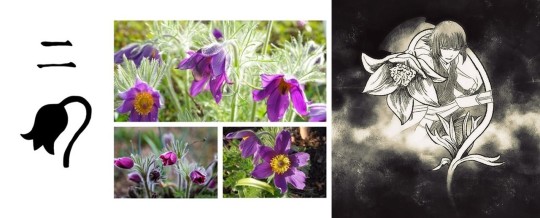
The flower insignia of the 2nd division is the Pasque flower (Pulsatilla) which is also known as the nodding anemone and wind flower. It is called the okinagusa (翁草) in Japan. According to the official Bleach lore, this insignia means “seeking nothing”. Its additional meanings in hanakotoba include “untold love”, “pure heart”, and “love of betrayal”. The downward flower of the Pasque flower is said to have given rise to it symbolising "untold love" and "pure heart" as this is thought to mirror the feelings of a pure girl who is ashamed of her sentiments and finds it difficult to express them. The Pasque flower's symbolic meaning of a "love of betrayal" stems from the fact that after reaching their peak, the flowers that initially bloom face downwards turn upward. In Western floriography, the Pasque flower represents rebirth, renewal, hope, dignity, nobility, grace and the phrase “forsaken in love”.
-> Division 03: Marigold
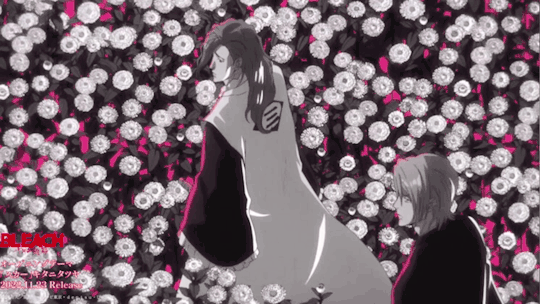

The flower insignia of the 3rd division is the marigold (Tagetes) which is known as the marīgōrudo (マリーゴールド) in Japanese. According to the official Bleach lore, this flower signifies despair. Its meanings in hanakotoba include jealousy, despair and sadness. In Western floriography, they symbolise grief, despair, and jealousy as well as the expression of deep feelings and passion.
-> Division 04: Bellflower
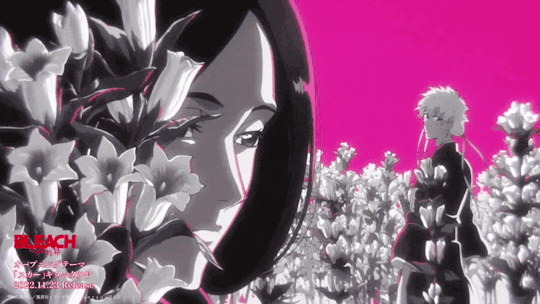

The flower insignia of the 4th division is the bellflower (Campanula) which is known as the berufurawā (ベルフラワー ) and otome kikyo (乙女桔梗 ) in Japan. According to the official Bleach lore, this flower signifies that “those who grieve are loved”. Its meanings in hanakotoba include gratitude, sincerity and pleasant chatter. Bellflowers are a symbol of gratitude, constancy, romance, and support in Western floriography. Additionally, bellflowers can stand for affection, delicacy, humility, and everlasting love. In particular, blue bellflowers are symbolic of peace, healing, openness, tranquility, and friendship—on the other hand, cream bellflowers are symbolic of thoughtfulness, grace, elegance, peace, and hope. Given that a bellflower's shape resembles a church bell, it is believed that the flower's symbolic meanings of gratitude and sincerity originate from church teachings. It is thought that the bellflower's symbolic meaning of pleasant chatter originates from the observation that its flowers which point diagonally upward bloom together giving the impression that the small flowers are merrily conversing with one another.
-> Division 05: Lily of the Valley


The flower insignia of the 5th division is the lily of the valley (Convallaria majalis) which is known as suzuran (鈴蘭) in Japanese. According to the official Bleach lore, this flower represents sacrifice, danger, pure love, humility and sweetness. Its meanings in hanakotoba include purity, humility, sweetness, chastity and finding happiness again. These flowers are symbolic of purity, humility, sweetness, rebirth, good fortune, joy, youth, discretion and a return of happiness in Western floriography. With its lovely, sweet aroma, it's difficult to believe that such a demure-looking flower could be dangerous. It is crucial to highlight, however, that this flower is an extremely toxic plant that, if consumed, can cause severe disease or death. The Lily of the Valley plant contains around 38 distinct cardiac glycosides (cardenolides)—which are a class of organic compounds that increase the output force of the heart and decrease its rate of contractions—that are exceedingly poisonous to both humans and animals. Given its toxicity, it's ironic, that the plant is associated with good fortune, purity, joy, and sweetness.
-> Division 06: Camellia
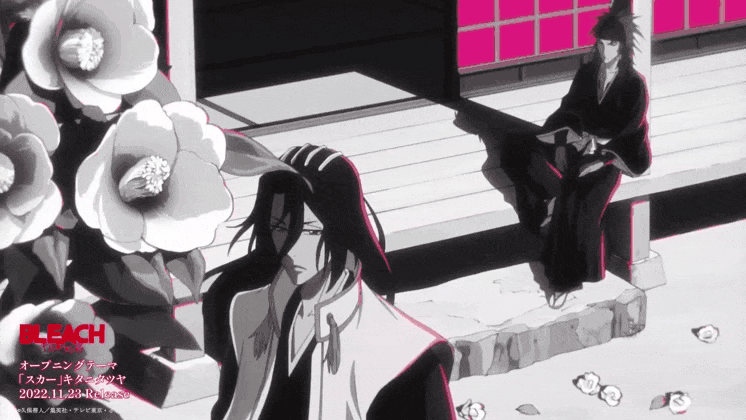
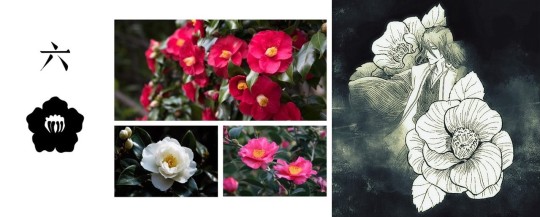
The flower insignia of the 6th division is the Japanese camellia (Camellia japonica) which is known as tsubaki (椿) in Japanese. According to the official Bleach lore, this flower represents “noble reason”. Its meanings in hanakotoba include modest kindness and pride. In Western floriography, camellias have a long-standing symbolic association with romance and devotion. They symbolize strong desire and passion as well as unfaltering love, devotion, affection, refinement, perfection, faithfulness, and admiration. Normally, the petals and calyx separate as a flower dies, but in the case of camellias, the petals and calyx fall together, preserving the entire flower. In recognition of this, camellias are used to represent longevity, perfection, and pure, unreserved, love that never fades. Red camellias are thought to represent romantic love, passion, or desire. Pink camellias convey feelings of longing and gratitude. White camellias are associated with purity, faithfulness, admiration, perfection, and good fortune. On the other hand, white camellias are regarded to bring bad luck in Japan since they are associated with death and mourning.
-> Division 07: Iris


The flower insignia of the 7th division is the iris (Iris japonica) which is known as ayame (菖蒲) in Japanese. According to the official Bleach lore, this flower signifies courage. Its meanings in hanakotoba include glad tidings, loyalty, messages, hope, graciousness as well and kindness of the heart. In Western floriography, they symbolise hope, faith, friendship, wisdom, royalty, valour and messages.
-> Division 08: Crane flower
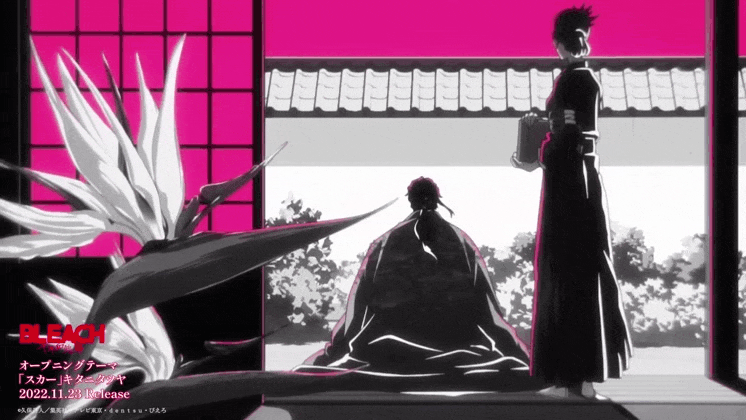
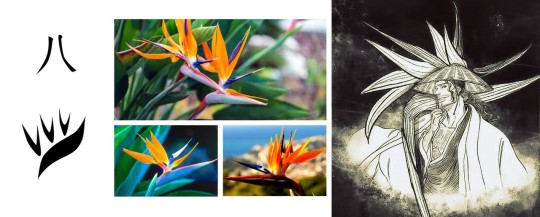
The flower insignia of the 8th division is the Crane flower (Strelitzia) which is also called the Bird of Paradise flower. In Japan, it is known as the Gokurakuchouka (ゴクラクチョウカ ). Its Japanese and English names are derived from the flower’s resemblance to a family of tropical birds native to New Guinea called Paradisaeidae. According to the official Bleach lore, this flower represents “everything that is obtained”. The phrases "date in love" and "pretentious in love" are its hanakotoba meanings. The exotic appearance of the flower, which is compared to a person in love, is considered to be the basis of these connotations. In Western floriography, the crane flower symbolizes magnificence, faithfulness, excellence, success and well as having joy in the face of both challenges and successes alike. Additionally, they also symbolize freedom due to the flower’s resemblance to a bird in flight. The Crane flower is native to South Africa where it holds the meanings of freedom, success, loyalty, thoughtfulness, immortality, love and optimism.
-> Division 09: White poppy
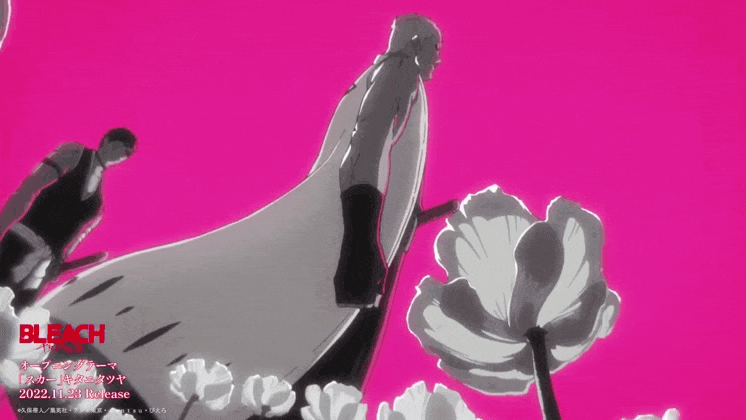
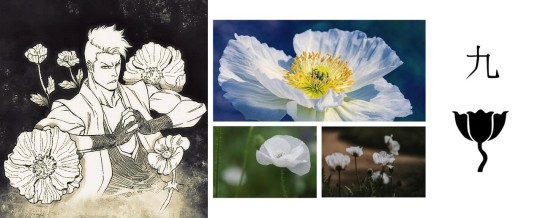
The flower insignia of the 9th division is the white poppy (Arctomecon merriamii) which is known as shiroi popī
(白いポピー) in Japanese. According to the official Bleach lore, this flower symbolizes oblivion. Its meanings in hanakotoba are sleep and oblivion. In Western floriography. White poppies represent sleep and peaceful rest. They are associated with faith and the concept of the soul's eternal life, and they also serve as a symbol of remembrance for deceased loved ones. Given that white flowers are symbolic of purity; white poppies are a symbol of restful sleep, pleasant dreams and renewal.
-> Division 10: Daffodil

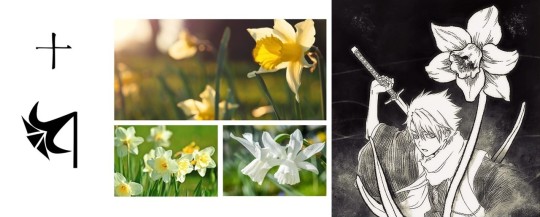
The flower insignia of the 10th division is the daffodil (Narcissus) which is known as suisen (水仙) in Japanese. According to the official Bleach lore, this flower signifies mystery and egoism. Its meanings in hanakotoba include self-love and self-esteem. Yellow daffodils in particular are linked to the phrases "come back to me" and "I want you to love me again." In English floriography, daffodils represent self-love, respect, egoism, and unrequited love. In contrast with the aforementioned negative connotations, daffodils also represent strength, overcoming hardships, and the arrival of success and wealth. White flowers typically symbolize purity—however white daffodils signify a desire for transformation.
-> Division 11: Yarrow
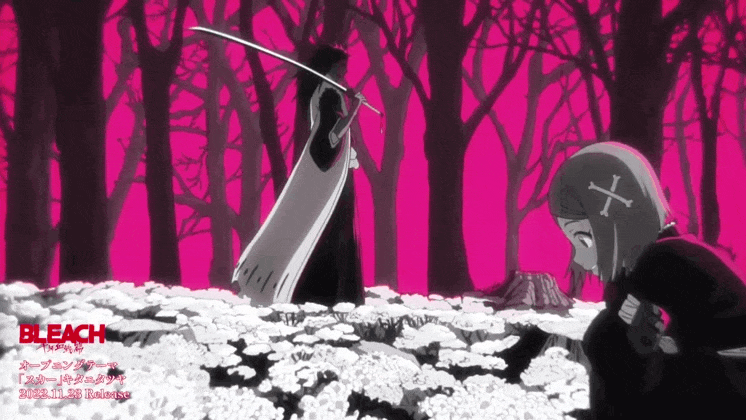

The flower insignia of the 11th division is the yarrow (Achillea alpina) which is known as nokogiri (鋸草) in Japanese. According to the official Bleach lore, this flower signifies fighting. Its additional meanings in hanakotoba include bravery and healing. The yarrow is a symbol of bravery in Western floriography, particularly in times of war, and wearing it is said to bestow courage and protection. The yarrow is also said to represent everlasting love, healing and good health because of its medicinal properties. Its Japanese name, “nokogiri”, translates to “saw grass” and is presumably derived from how the tooth-like shape of a saw’s teeth resembles the plant’s bipinnate/tripinnate leaves.
-> Division 12: Thistle

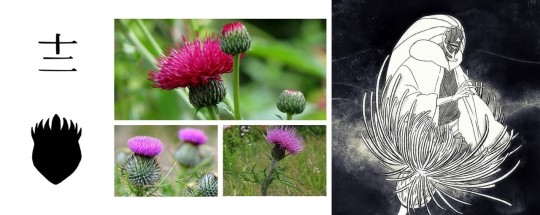
The flower insignia of the 12th division is the thistle (Cirsium spp.) which is known as azami (アザミ) in Japanese. According to the official Bleach lore, this flower signifies vengeance, strictness and independence. Its meanings in hanakotoba are independence, retaliation, sternness and “do not touch”. In western floriography, thistles symbolise austerity, nobility of character, independence and misanthropy. In the Victorian era, the gift of thistle flowers served as a warning against unwanted meddling. These flowers are incorporated in the expression “as prickly as a thistle” which describes someone who is easily enraged, particularly in the face of criticism. As Scotland’s national flower, thistles represent bravery, luck and strength. Thistles are referred to as the "flower of the sun" and the "herb of the witches" in the Basque area of France. It is said that thistles provide protection from evildoers and witchcraft because witches are said to be unable to look directly at the sun.
-> Division 13: Snowdrop


The flower insignia of the 13th division is the snowdrop (Galanthus nivalis) which is known as the sunōdoroppu (スノードロップ) and the matsuyukisou (待雪草) in Japan. According to the official Bleach lore, this flower represents hope. Its meanings in hanakotoba are hope and consolation. In Western floriography, the snowdrop represents purity, rebirth, sympathy and hope. A single snowdrop was seen by the Victorians as a symbol of death and was unlucky to bring into a home. On the other hand, the snowdrop is also associated with rebirth, springtime, and the ability to overcome life's challenges. The snowdrop blooms from mid to late January as winter slowly begins to end thereby reminding us that there is light at the end of the tunnel. It reminds us all that if we put our minds to it, we can achieve great things in life. It also serves as a reminder of change and represents a willingness to grow. Snowdrops are thus often gifted to those trying to move forward from sadness and negativity.
○●○●○●○●○●○●○●○●○●○●○●○●○●○
[If you liked this post, check out part 1 (here) and part 2 (here)... Also, here's the link to my directory of other hanakotoba analysis posts (here)]
[P.S. Here is the final part of my hanakotoba analysis on Bleach. I kept things brief and didn't go into how each flower suits each squad, captain and vice-captain primarily because of time constraints... Also, I doubt anyone wanted to do that much reading lol... I'll happily elaborate and answer any questions in the comments though...]
#tried to keep this brief but ended up rambling lol#bleach#bleach anime#hanakotoba analysis#bleach hanakotoba#bleach florigraphy#hanakotoba#floriography#anime hanakotoba#anime analysis#bleach ed 31#bleach op16#anime openings#anime endings#anime music#anime#bleach tybw#bleach tybw part 1#bleach tybw part 2#bleach tybw anime#tybw#gotei 13#soul society#bleach captain#bleach captains#gotei 13 captains
67 notes
·
View notes
Text
yknow AI art has ruined an entire genre of painting to me, i saw one of those smooth anime-realism pieces and immidiately thought ''ugh, AI art'' until i noticed it was posted by an established deviantart user 6 years ago. like ive never been a huge fan of that genre but it looks like a pretty difficult style to master and i feel bad for the artists who specialized in anime-realism only to have their entire market jacked by people typing keywords into midjourney.
#like. yall know the exact kind of smooth shaded anime realism i mean right.#its SO prevelant in ai art to the point that i end up always end up assuming that style is ai more often than not
79K notes
·
View notes
Text

now she’s all ready for spooky season—are you? 🌕🐺
#animation#werewolf#artists on tumblr#procreate#idk WHY i had to paint in every single frame in procreate and also in parts#bc the layering meant i hit max layers and had to flatten as i cleaned#but the end result is ok and i could do it on the couch ig#looking forward to their new app!#art
66K notes
·
View notes
Text
Our song choice for today was the ending for Buddy Daddies, My Plan by DURDN. It features Miri almost exclusively but gives the feeling of a scrapbook of memories of her growing up. Enjoy!
#anime#anime blog#blog#anime and manga#anime series#music#anime music#anime endings#anime ending#buddy daddies#buddy daddy#saturday songs
2 notes
·
View notes